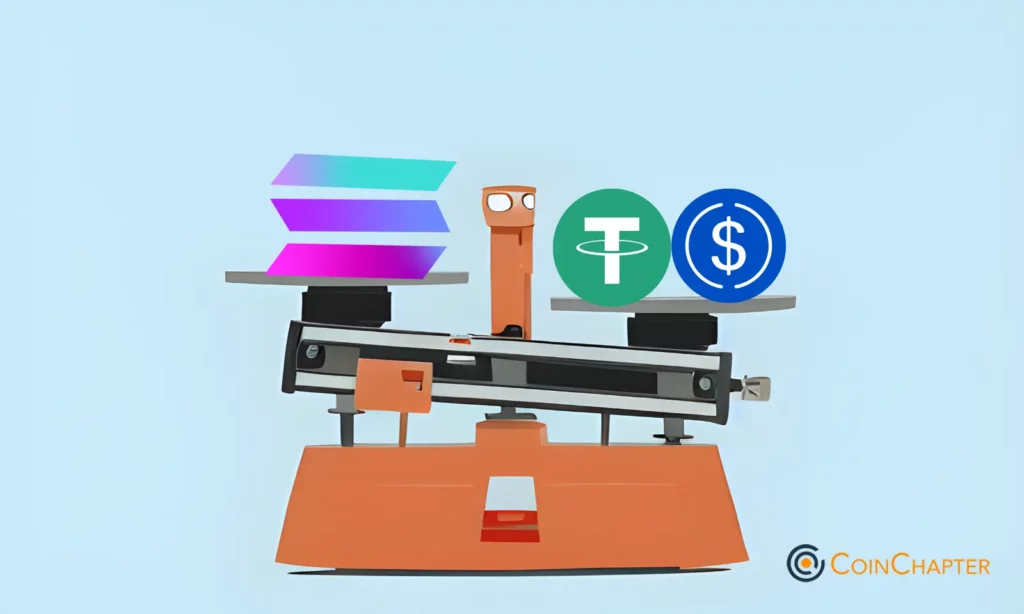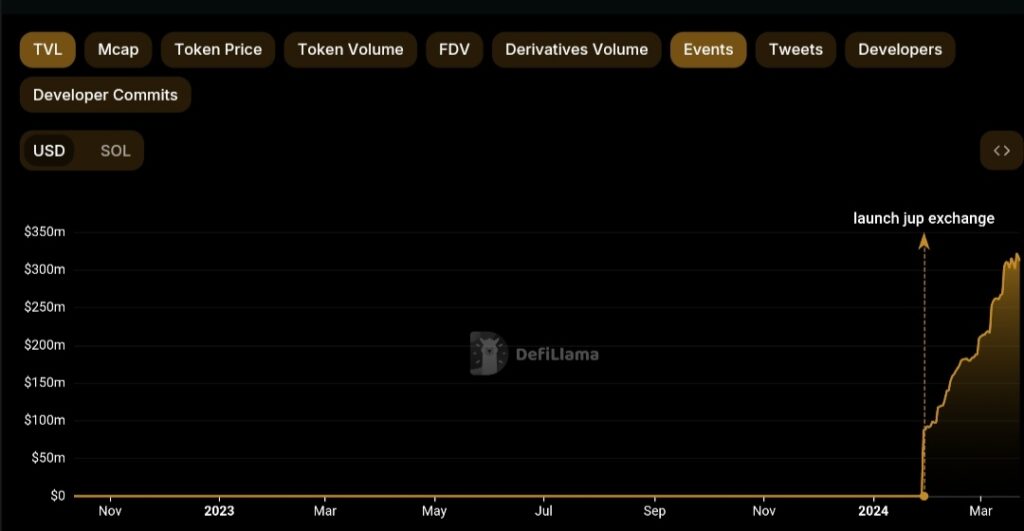
LUCKNOW (CoinChapter.com) — Solana blockchain is challenging Circle’s USDC and Tether’s USDT dominance in the $3 billion stablecoin market.
At the forefront is Mrgn, the company behind the year-old lending and liquid staking protocol, Marginfi. This month, they are likely to launch a new stablecoin with a “soft peg” to the US dollar.
Not far behind is Jupiter. This decentralized exchange aggregator entered the Solana ecosystem just before the collapse of the FTX exchange in November 2022. While Jupiter has yet to announce a release date for its stablecoin, the project is actively developing a viable solution.

The success of these initiatives could potentially disrupt the duopoly enjoyed by USDC and USDT in Solana’s lucrative stablecoin market. More importantly, it would provide Solana users with a crypto-native alternative. These are highly coveted assets among crypto purists seeking stable, censorship-resistant digital currencies.
Stablecoins’ Real-World Utility Fuels Demand
Stablecoins have emerged as one of the most successful real-world applications of crypto technology. They are increasingly used for payments and transactions in regions like Lebanon and Argentina. Their value stems from being pegged to other assets, typically the U.S. dollar. This provides a blockchain-based haven from the volatility that plagues most other cryptocurrencies.
However, previous attempts to create crypto-backed stablecoins on Solana have struggled. Nearly 70% of the blockchain’s stablecoin market is dominated by the centralized USDC, according to data from DefiLlama. Together, circle’s USDC and Tether’s USDT command a staggering 99% market share on Solana.

In contrast, on Ethereum, these centralized giants face stiffer competition from crypto-backed contenders like MakerDAO’s DAI and Ethna’s USDe. Together, these two account for 7% of the Ethereum stablecoin market.

Proponents of decentralization often support such crypto-backed offerings due to their limited exposure to the traditional banking system.
Nevertheless, similar projects on Solana have found little success so far. The three largest crypto-backed Solana stablecoins – UXD, PAI, and USDH – have a combined circulating supply of just 15 million.
You Might Also Like: Solana Beats Ethereum To Become Best Blockchain Ecosystem of 2024
Anders Jorgensen, Head of Growth at Marginfi, attributes USDC’s dominance to Solana’s relatively immature DeFi ecosystem.
Solana’s still really early. It’s mostly just been a function of there haven’t been as many devs as the EVM ecosystem, and the really quality teams have just pursued other primitives so far.
Jorgensen said.
Marginfi’s stablecoin, YBX, will be backed by liquid staking derivatives, such as the company’s own LST and Jito’s JitoSOL. Unlike traditional stablecoins, YBX is designed to gradually drift away from its “soft” dollar peg as the assets backing it appreciate in value over time.
This unique design is the reason why Marginfi chose to eschew the traditional “USD” naming convention used by most dollar-pegged stablecoins.
“It’s not exactly a stablecoin, right?” said Jorgensen.
Right now, it’s a dollar-denominated stake pool. So you’re just getting the yield from staking in dollar terms.
‘Ton of Demand’ Drives YBX’s Potential Success
While some analysts, like Messari’s Kunal Goel, have raised concerns about the potential limitations of such a design for adoption across DeFi as a medium of exchange, Jorgensen remains confident in YBX’s prospects.
“In the market, we’re in right now, there’s a ton of demand to get leverage, and so rates are super high,” he said, noting that the cost to borrow USDC on Marginfi, Kamino, and Solend – all Solana lending protocols – ranged from 20% to 29% at the time of the interview.
In contrast, Marginfi plans to charge an interest rate of around 2% for minting YBX, providing a clear incentive for users to opt for the new stablecoin. “If you can get leverage for that cheap, which is what we’re going to offer with YBX, I think there’s a very clear incentive to mint,” Jorgensen asserted.



